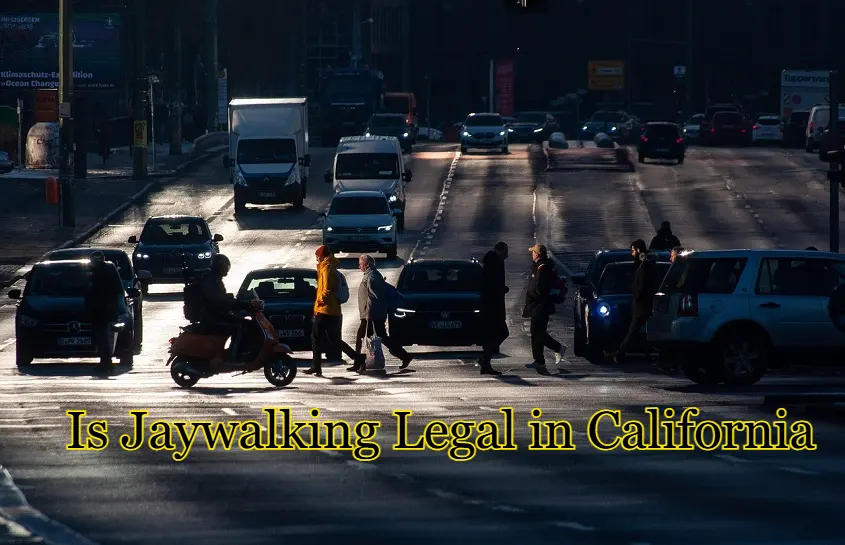Is jaywalking legal in California? People ask this more often now, especially as laws have shifted. For years, walking outside a crosswalk could mean a ticket. That’s changed. Today, in some cases, it’s allowed—but only if it’s safe. Many still feel unsure. Drivers hesitate. Pedestrians wonder. The law isn’t always clear on the street. That’s why this topic matters. It’s important to understand the rules. Whether you live in California or you’re just visiting, it helps to be aware. This guide explains everything in simple terms. That way, you know what to expect and how to stay safe.
What Does the Law Say?
For many years, walking across the street outside a marked crosswalk or against the pedestrian signal was considered illegal across California. By 2023 those rules began to shift. Under the Freedom to Walk Act, pedestrians are now allowed to cross mid-block—but only when it’s safe to do so.
Safety comes first. You can’t cross if it puts drivers in danger. If a car has to stop fast, it’s not okay. If a driver swerves, that’s not safe either. You might still get a ticket for that. So, is it legal to jaywalk in California? Yes—but only when no one is at risk.
Timeline: 2023 Through 2025
Is jaywalking illegal in California 2023?
Back in early 2023, jaywalking could still get you a ticket. Stepping off the curb outside a crosswalk wasn’t allowed. That’s how the rules stood—until the new year. On January 1st, everything shifted. A law called the Freedom to Walk Act kicked in. It gave people more room to cross safely, without fear of being fined.
Is jaywalking legal in California 2024?
By 2024, the practical effect of that new law became clear. Many law enforcement agencies stopped citing people for safe mid‑block crossings. That meant walking across the street when no traffic was around was no longer considered an offense. At that point, jaywalking became legal—as long as one doesn’t create danger for oneself or others.
Is jaywalking legal in California 2025?
The policy remains unchanged in 2025. Pedestrian behavior that causes no real traffic disturbance is permitted. So yes, is jaywalking legal in California 2025? The answer continues to be yes, provided the crossing meets the law’s safety conditions.
What Does “Safe Crossing” Mean?
Understanding safety under this law matters more than ever:
- You may cross away from a crosswalk when no car is near.
- You must yield the right‑of‑way to any approaching vehicles.
- If your crossing causes vehicles to stop or veer unexpectedly, that crossing is unsafe.
- Police can still cite individuals for taking unreasonably risky crossings.
In summary, walking across a quiet block isn’t illegal, but stepping into traffic without cause still carries consequences.
For Drivers: What You Should Know
California drivers now share responsibility with pedestrians more than ever. Legal changes have shifted some of the burden onto drivers to be more vigilant. Here is what drivers must keep in mind:
- People may cross mid‑block even if there’s no crosswalk.
- You must yield to anyone already walking in the roadway.
- Keep speeds safe in residential and high‑foot‑traffic areas.
- A driver can be held liable if distracted—even if the pedestrian was technically jaywalking.
Accidents still hinge on who acted negligently. So safe driving remains critical.
For Pedestrians: How to Stay Safe and Lawful

Even though crossing is more permitted now, safety rules still matter. If you ignore them, a citation remains possible.
Best practices for walkers:
- Look both directions and assess vehicle distance.
- Avoid crossing right in front of moving traffic.
- Never dart out between cars or around parked vehicles.
- Choose crosswalks during high‑traffic times.
- Reduce distractions and stay aware.
- Wear bright clothing at night to increase visibility.
Yes, crossing may be legal—but only if it’s executed carefully.
Still a Ticketable Offense If Unsafe
Law enforcement still has authority when a crossing is risky. Officers can issue citations when:
- A pedestrian steps into a lane of moving traffic.
- Drivers must slow abruptly or swerve to avoid someone.
- The pedestrian disregards clear safety norms.
However, if a crossing is calm and traffic nonexistent, it generally isn’t ticketable. The law aims to enforce actual hazards, not rule-breaking by itself.
Why California Made This Change
Several key motivations led lawmakers to support these legal updates:
- Reducing unnecessary fines and enforcement in low‑income communities.
- Acknowledging jaywalking tickets rarely improve road safety.
- Focusing on real risks, not technical violations.
Those supporting the Freedom to Walk Act wanted to ensure safe pedestrian habits didn’t trigger law enforcement. As of 2025, that intent holds firm: walking sensibly is lawful.
Has Safety Been Impacted?
So far, early post‑law data suggests no significant rise in pedestrian collisions connected to legal mid‑block crossings. Some cities report that fewer stops improved police focus on serious violations instead. Rather than policing minor infractions, agencies can now prioritize real dangers.
Common Misunderstandings Clarified
People often misunderstand jaywalking laws. Let’s clarify:
- “Walking anywhere is now legal.”
Only safe crossings are permitted—unsafe actions remain penalizable. - “Drivers are always at fault now.”
Fault still depends on who acted more negligently. - “All cities follow the exact same policy.”
While state law is uniform, local signage, school zones, or construction sites may restrict crossings further.
Always observe local traffic signs—they complement state standards.
Local Variations Across California
Even with statewide rules, local jurisdictions may add context:
- School zones may enforce stricter crossing behavior.
- Pedestrian overpasses or underpasses sometimes limit crossing points.
- Construction or detour areas might temporarily close mid‑block crossings.
In such cases, crossing outside of designated areas may still be illegal, even if broadly permitted elsewhere.
Final Thoughts
California has taken a modern approach. Rather than blanket bans on mid‑block crossings, it now prioritizes common sense and safety. If someone moves across an empty street without risk, they can do so freely. But reckless or hazardous crossing remains illegal.
If you’ve asked yourself, “Is jaywalking legal in California?” the answer is yes, just not in every case. You can cross the road, but only if it’s safe and no cars need to stop or slow down because of you.
FAQs
A: Safe grace for pedestrian crossings began on January 1, 2023, under the Freedom to Walk Act. Since then, crossing outside of a crosswalk has been permitted if no danger is created.
A: The Outcome depends on driver speed, attention, and pedestrian behavior. If the walker crossed recklessly and into traffic unexpectedly, fault may lie with them. But if the driver was distracted or speeding, they may be held responsible. Accident liability centers on negligence and context.
A: Unsafe crossings can still result in tickets. Fines typically range from $196 to $250, varying by city, court fees, and case specifics. When a citation is issued, it’s because the crossing presented a traffic hazard, not simply because it occurred outside a crosswalk.
